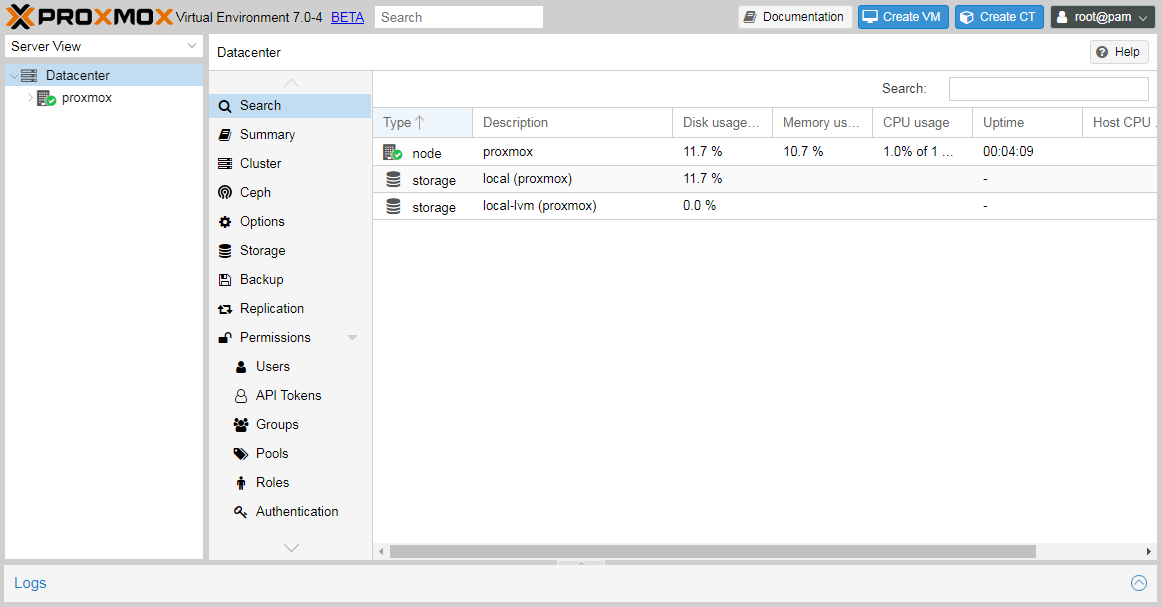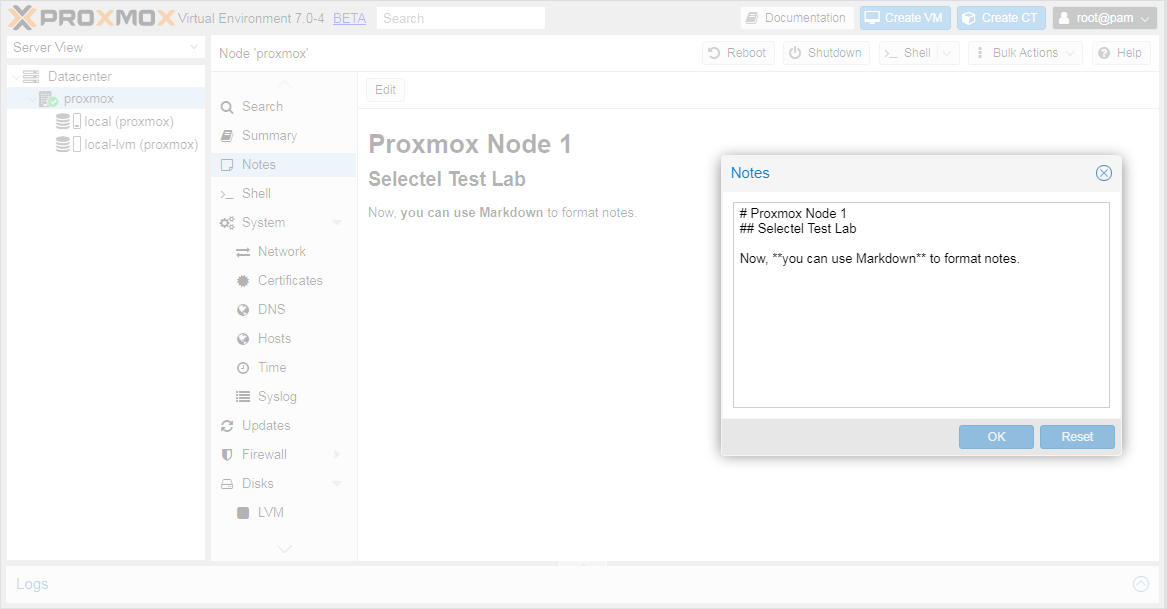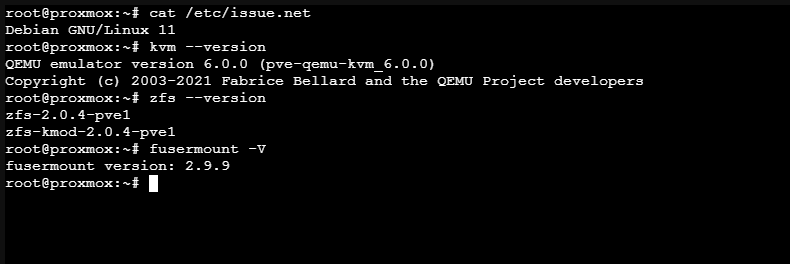
On June 24, the first beta version of the popular open source virtualization system Proxmox 7.0 became available . Today we will see what drastic changes will be presented in a future release.
Of course, we are by no means trying to replace the full changelog, it can be viewed at any time on the official Proxmox VE website . But it was important for us to consider the key changes, so welcome under the cut - we have studied everything and present the results of our own observations.
Installer
First, let's take a look at the changes in the installer. Visually, it has not changed in any way, all the same familiar actions and meanings. The main change is functional, this is the transition from chroot to switch_root. It improves loading of modules and firmware, and also slightly reduces RAM consumption during installation.
The installer now better recognizes HiDPI displays and makes the console font and scaling match that hardware. In previous versions, the installer sometimes displayed elements incorrectly: for example, buttons could "go" off the edge of the screen.
The initrd temporary filesystem and squashfs images use the Zstandard lossless compression mechanism, and BusyBox has been updated to version 1.33.1. The system for working with ISO images has undergone a little tuning, in particular, the support for ISO images from USB3 flash drives has been improved, and the recognition time for slow devices has been increased (the timeout has been increased from 20 to 45 seconds).
Web interface

major changes, in particular:
- in notes, you can now use Markdown, which will display correctly and allow you to better structure all the entered data;
- when creating backups manually, it became possible to set restrictions for policies for storing backups on the target storage;
- ( 10) ;
- , YubiKey SSH cloud-init ;
- IOMMU PCI QEMU;
- , , .

Let's move on to what has changed inside the virtualization system. The most significant change in the new version of Proxmox will be the transition to Debian 11 "Bullseye" on kernel 5.11, which will be released in a stable release at the end of 2021. The current version of QEMU 6.0 is involved, which we talked about here on Habré, a couple of months ago, so now the io_uring feature (asynchronous IO mechanism) will be applied to all newly launched or migrated guest systems.
If the disk needs to return to the previous mode of operation, then you can fix it with the command:
qm set VMID --DRIVE EXISTING-DRIVE-OPTS,aio=native
The set of tools for containerizing applications has also been updated - LXC now has version 4.0, with full support for cgroups2, a mechanism for hierarchical organization of processes and allocation of system resources. Of course, the actively promoted ZFS file system has not been spared either - its version has been updated to 2.0.4.

Good news for those who accidentally lost virtual machine disks that had no links in the configuration and were destroyed by the option to clean up unused images - now the system will not automatically erase such disks.
This innovation first appeared in version 6.4, but it was only available from the web interface. Now this is implemented both in the CLI and in the API. The vaults will be scanned for unused disk volumes, but they will not be destroyed automatically. This is a great solution to protect against human error, such as accidentally adding the same backing store twice, creating an overlapping set of content types. In this case, the cleaning system may not work correctly and cause unintentional data loss.
Another change in logic concerns the states of snapshots of virtual machines. Now, when you delete a VM, the snapshot states will also be cleared, which should be taken into account by system administrators when developing DRP. By the way, vzdump also changed the logic of its work and now saves all backups, not just the last one.
Another important change: now you do not need to manually install ifupdown2, which is required when applying network parameters without rebooting the host. In Proxmox 7 beta 1, this package is installed out of the box. With all this, the first version is still supported, but will likely be removed in future releases.
Beta issues
Of course, the beta already has a list of known issues that are likely to be resolved prior to release:
- , Mellanox;
- MAC- machine-id , , MAC-, Proxmox VE ( 4.0 5.4) machine-id.
Since this is a beta version, there can be many more bugs that arise. If you want to contribute, then do not be lazy to inform the developers about them.
Based on the current data, it is still possible to make an unambiguous conclusion that after the release, when switching to a new version, special care and caution will be required. In particular, before upgrading from versions below 6.4, you will first need to upgrade to 6.4 and only then switch to version 7.0.
A couple of tips from Captain Obvious
Be sure to organize a backup server management channel, for example, via IPMI or IP-KVM, as there may be a situation with the loss of access to the SSH console. Before performing the upgrade, be sure to check the current backup and recovery policies, bring them in line with the changed logic of the hypervisor behavior.
Don't use beta versions in production , it won't end well. We warned :)
